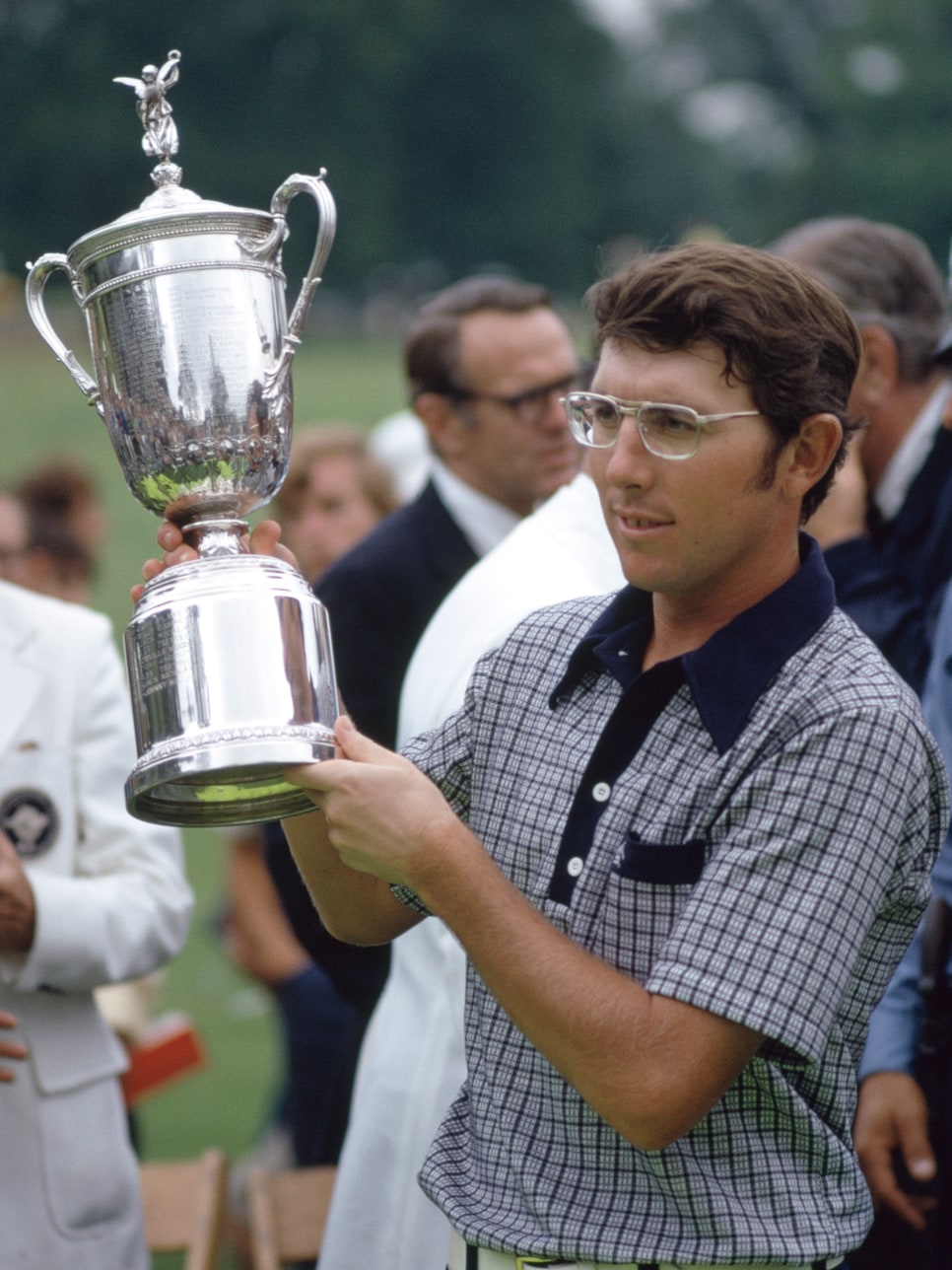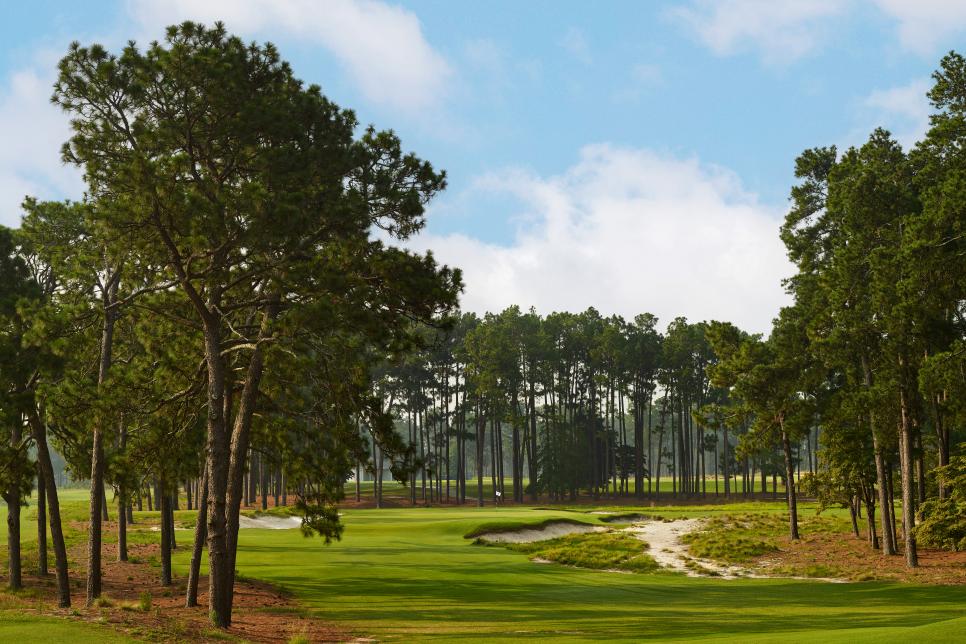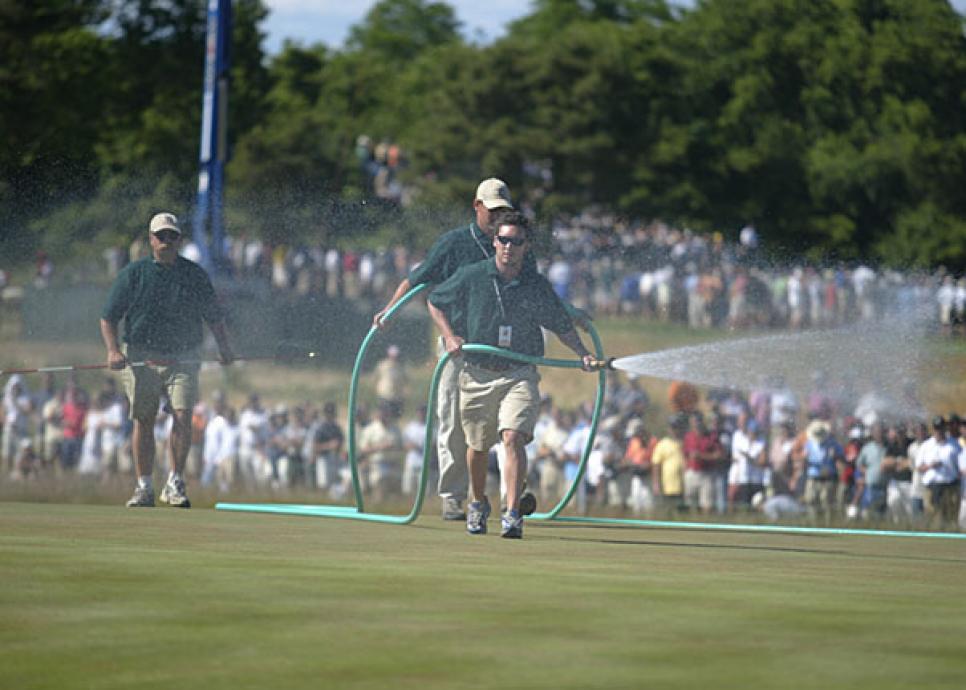There was nothing subtle about the way Winged Foot was set up for the 1974 US Open.
The USGA took what was already one of the hardest courses in the USA and grew shin-tickling rough defending champion Johnny Miller said ranged from six to 10 inches high. “I like to measure US Open rough by how far you’d be able to advance 100 balls if you hit into 100 different lies,” he said. “Some recent courses haven’t had any rough to speak of. At Winged Foot in ’74, the average was 80 yards. All you did was hit wedge or sand wedge out.”
And the greens? A car drove across the first green early in the morning before play on Friday and left visible tyre tracks in the dew. Once the grass was cut, there was no sign anything had happened. Players could hear their approach shots hit the concrete-like greens from 175 yards away.
The conditions were reflected in the scoring: Hale Irwin’s seven-over-par total was the highest winning score by a champion in 40 years, and the event earned the nickname “The Massacre at Winged Foot”. Irwin and Miller were among many competitors that week who called the setup the most brutal they had seen. Tom Weiskopf acidly referred to Miller’s record-low final round the previous year at Oakmont as the USGA’s motivator for fully exposing Winged Foot’s fangs. “It was pretty obvious after 1973 that we were going to get the conditions we played under,” he said. “It was a typical knee-jerk reaction by the USGA.”

Fifty years later, on the eve of this year’s US Open at Pinehurst No.2, almost everything has changed – including the USGA’s philosophy surrounding a course’s playing characteristics. If the 1974 setup was done with a machete, the work is now being done with a scalpel. In the months leading up to the event, the USGA and the home-course maintenance team have been practicing the kind of plastic surgery popular with A-list actors: build an enhanced and authentic-looking version of what was already there and give a variety of playing styles a chance to win.
The proof is in the recent list of champions, the scores they shot and the way the events have been received. Since the most recent US Open at Pinehurst in 2014, only one champion has been over par for the week. Brooks Koepka was one-over-par at Shinnecock Hills in 2018, defending his title a year after scorching Erin Hills at 16-under. The winning score the past five years has averaged eight-under, including last year’s 10-under-par performance by Wyndham Clark during a week in which two players (Xander Schauffele and Rickie Fowler) shot 62. Champions have ranged from bombers (Bryson DeChambeau) to stylists (Matt Fitzpatrick) and from world No.1s (Jon Rahm) to up-and-comers (Clark). Television ratings were up more than 20 percent last year in an environment in which more than 10 percent fewer households are tuning in to traditional television.
Instead of obsessing about making Pinehurst punishingly hard in response to relatively low scoring last year (or last month, when Schauffele went 21-under at the PGA Championship), the stated goal is to make Pinehurst No.2 play as the fairest, most substantial version of itself – and present in a way original designer Donald Ross could recognise.

Pinehurst No.2 is on the other side of the USA from the North course at Los Angeles Country Club and at the other end of the design spectrum. LACC offered plenty of room off the tee, wiry Bermuda rough and unplayable barranca areas. Pinehurst No.2 has no mowed rough, just wild areas where superintendent John Jeffreys and his team have strategically planted more native wiregrass to frame expected landing areas and punish wayward shots. That makes the visuals much different than the US Open of 10 years ago when the Ben Crenshaw and Bill Coore renovation was still brand new.
When conditions in the weeks leading up to the tournament are benign and predictable – as they have been this year in Pinehurst – tournament staff can control grass heights to a hundredth of an inch and deliver water with a similar level of precision. “We get that maybe once every five years for a US Open, where it comes down to just three things,” said former USGA executive director Mike Davis, who oversaw the setup at the previous Pinehurst US Open in 2014. “You’re managing your mowing heights, and if you’re lucky enough, you manage the water. They’re reading moisture levels on every green quadrant; they’re taking firmness readings. We look at all kinds of data, and that gives the plan for that afternoon or that evening’s prep. Then we’re monitoring Mother Nature.”
Better technology – and more openness to considering “playability” as a priority – has helped avoid disasters like the one at Shinnecock in 2004 when the USGA lost control of the course on the final day after unexpected heat and wind. Crews were forced to syringe the seventh green between groups to keep the grass alive, presenting wildly different playing conditions for groups before and after the moisture was added. No venue has as much control as Augusta National does with its extensive SubAir system and army of groundskeepers, but Pinehurst No.2 is down the street from USGA headquarters, and the course has been closed since late February to get ready for its big date. Lack of attention to detail – or time – will not be an issue.

There’s no great historical performance parallel for Pinehurst even though three men’s US Opens and a US Women’s Open have been played here in the past 25 years. The events Martin Kaymer and Michelle Wie won in back-to-back weeks in 2014 were early in the course’s life as a restored version of its classic self. Michael Campbell and Payne Stewart won on courses even more different than this one. Kaymer won in an eight-stroke laugher over Fowler and Erik Compton. Wie beat Stacy Lewis by two shots, and Campbell was the beneficiary of Retief Goosen’s final-round collapse and ended up beating Tiger Woods by two shots. The best of them all is the 1999 edition, when Stewart made a 15-footer on the last hole for par that kept him one shot ahead of Phil Mickelson.
He was the only player under par for the week.
As USGA competition chairman Sandy Tatum said during the Massacre at Winged Foot, “We’re not trying to humiliate the best players in the world. We’re just trying to identify who they are.”




